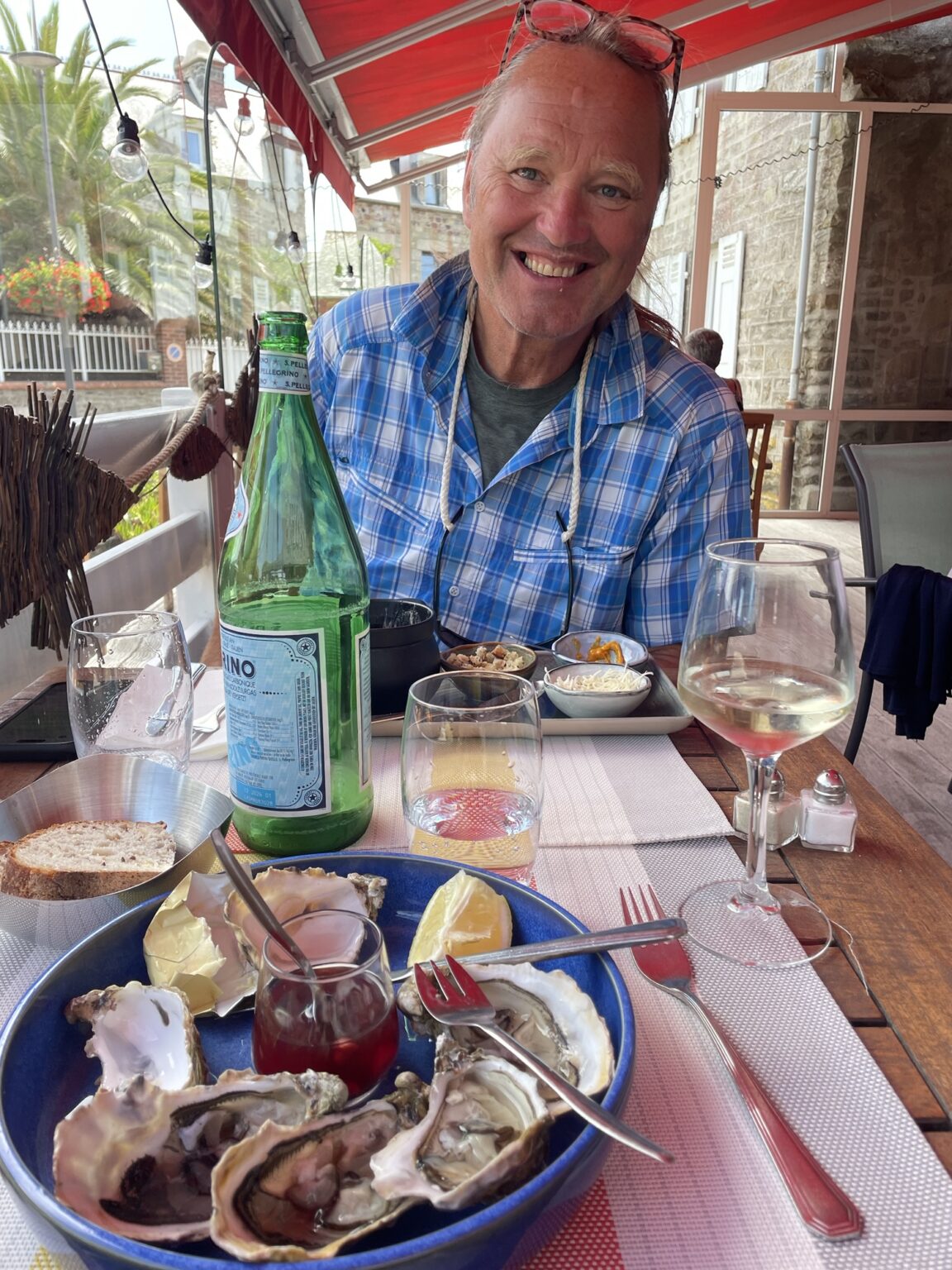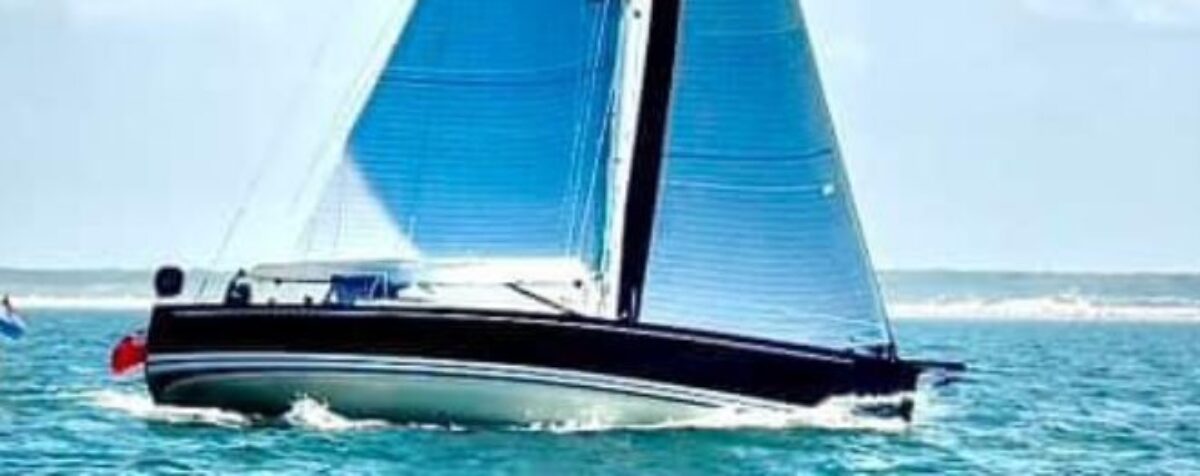Cherbourg to St Vaast-la-Hougue 30nm
Thursday 24/ Friday 25 July
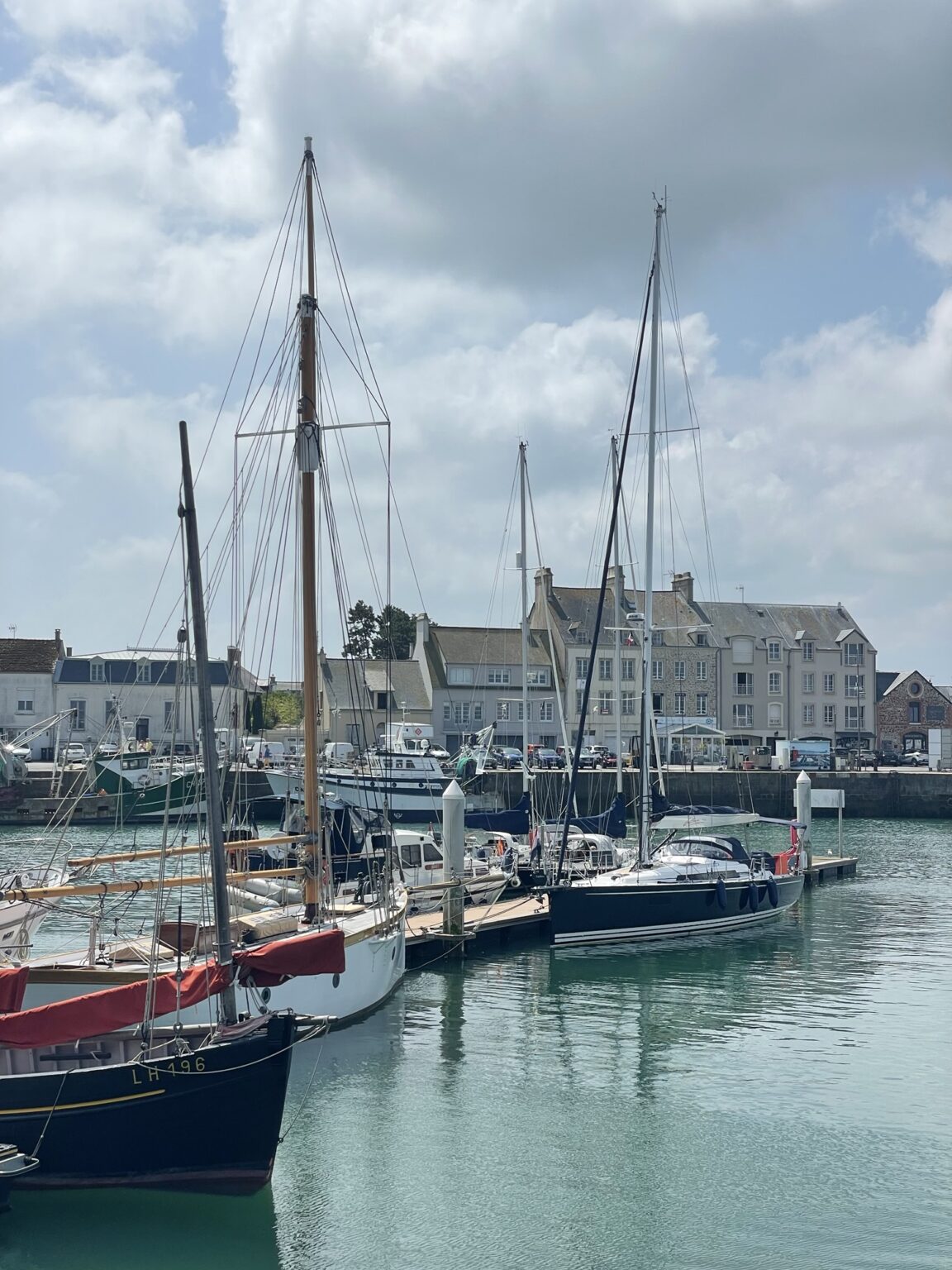
We couldn’t leave Cherbourg soon enough – we left at 7 – and I was in such a hurry that I left my phone down below, so no photos of the passage. We did make sure we had time for safety and we both clipped on because the sea was very lumpy.
We had much stronger winds than forecast – a nice steady force 4 with the wind coming from a more northerly direction which was good for us as we had the wind on the beam.
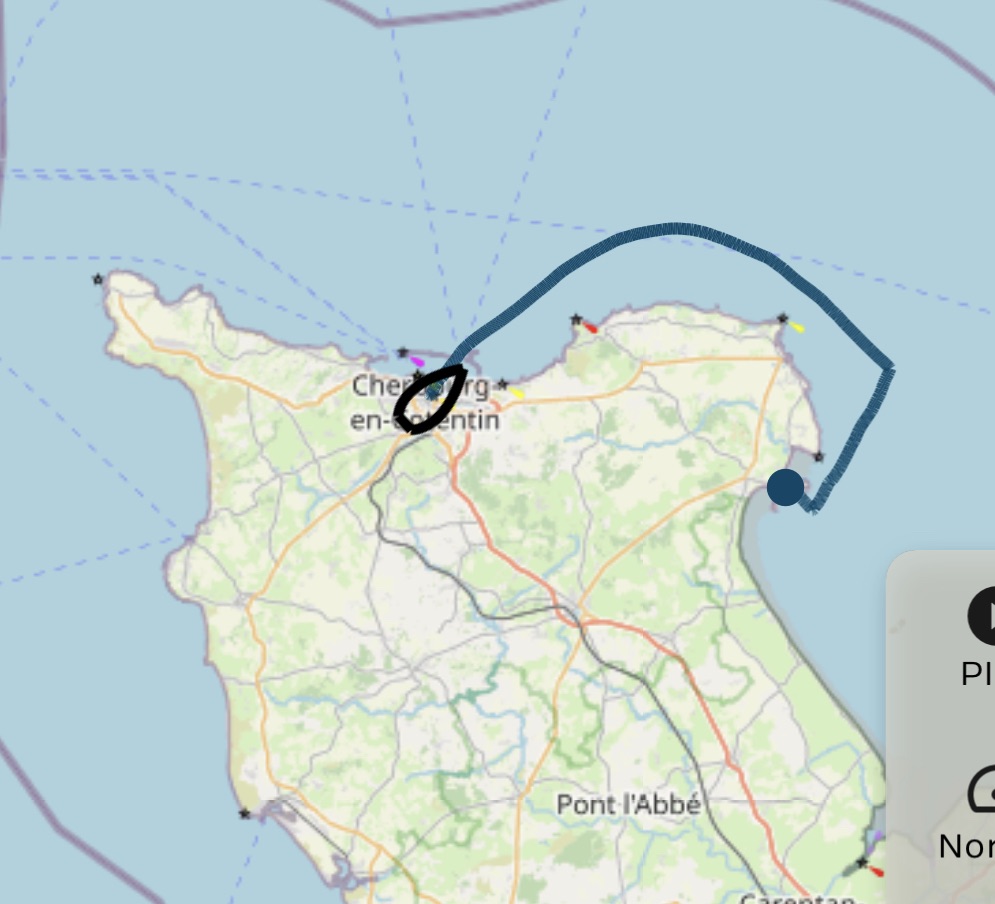
The pilot (book that gives you info on the local area) goes on about the tides off Barfleur off the East corner of the Normandy peninsula, but very little mention of what madness lurks just outside the harbour mouth at Cherbourg.
We had 4 knots of tide under us so we whizzed along but there was a lot of swirling short waves, some slamming, some breaking, with water across the deck. I got wet feet at the helm – this isn’t normal! – David sensibly was wearing his boots.
Once we got nearer to Barfleur the seas calmed down, but we were going too fast to bother with Lily – we were going 14 knots over the ground at one point.
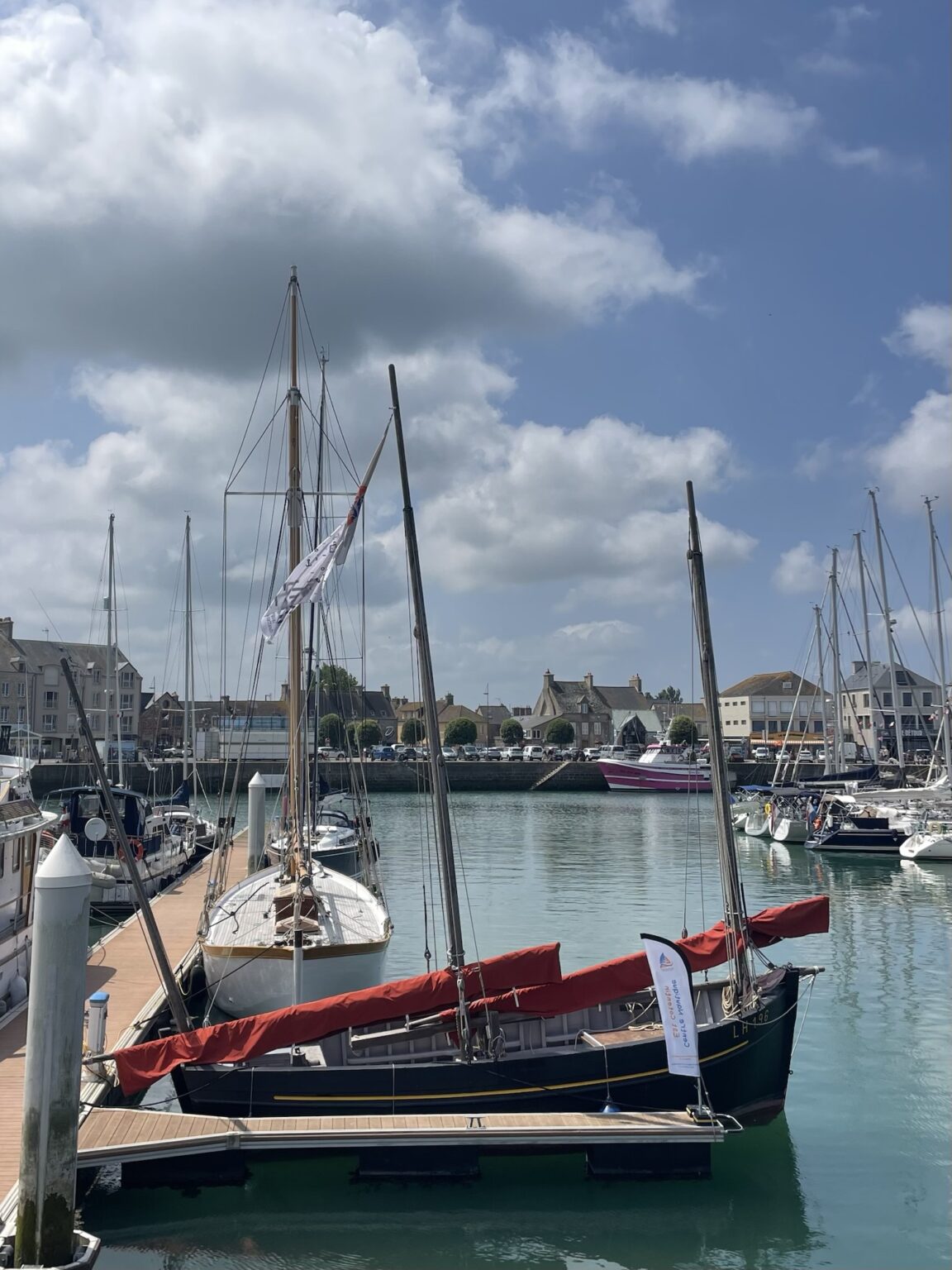
We arrived in pretty St Vaast-La-Hougue at high tide and the gate was wide open so in we went.
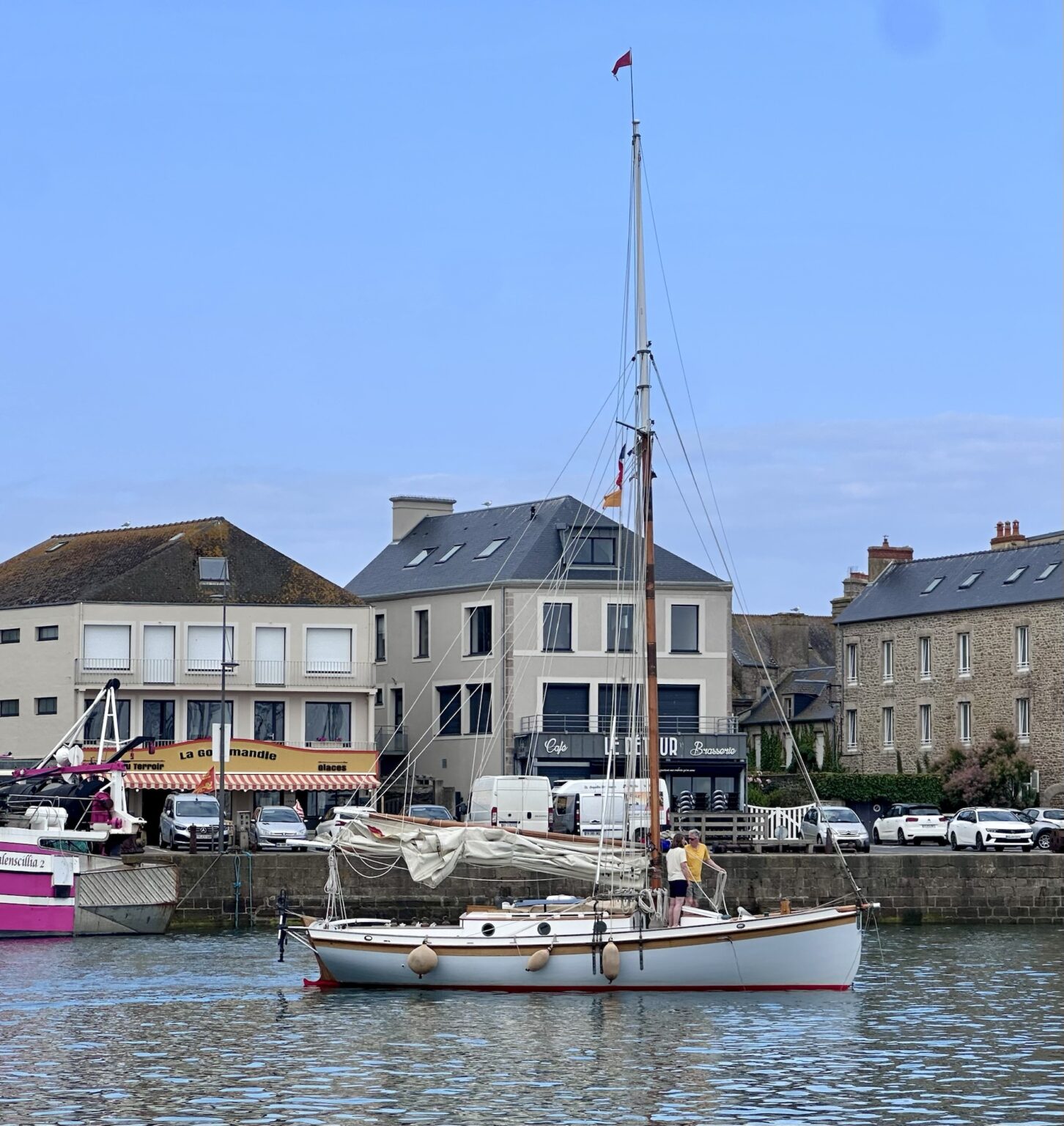
The gate keeps the water in the marina when the tide goes out.
In the marina office there’s a table so you can see when it opens and closes – so you know when you can leave!
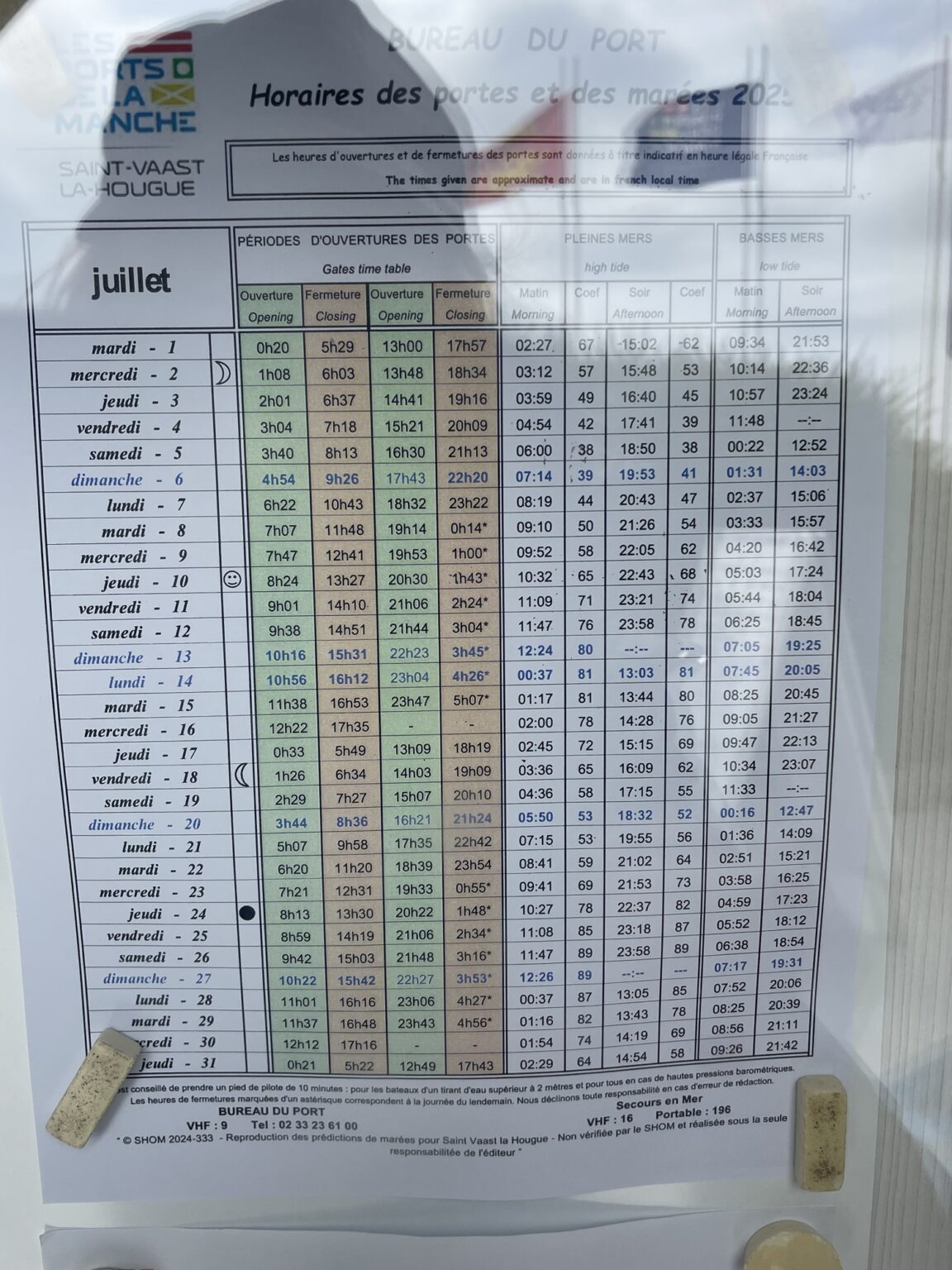
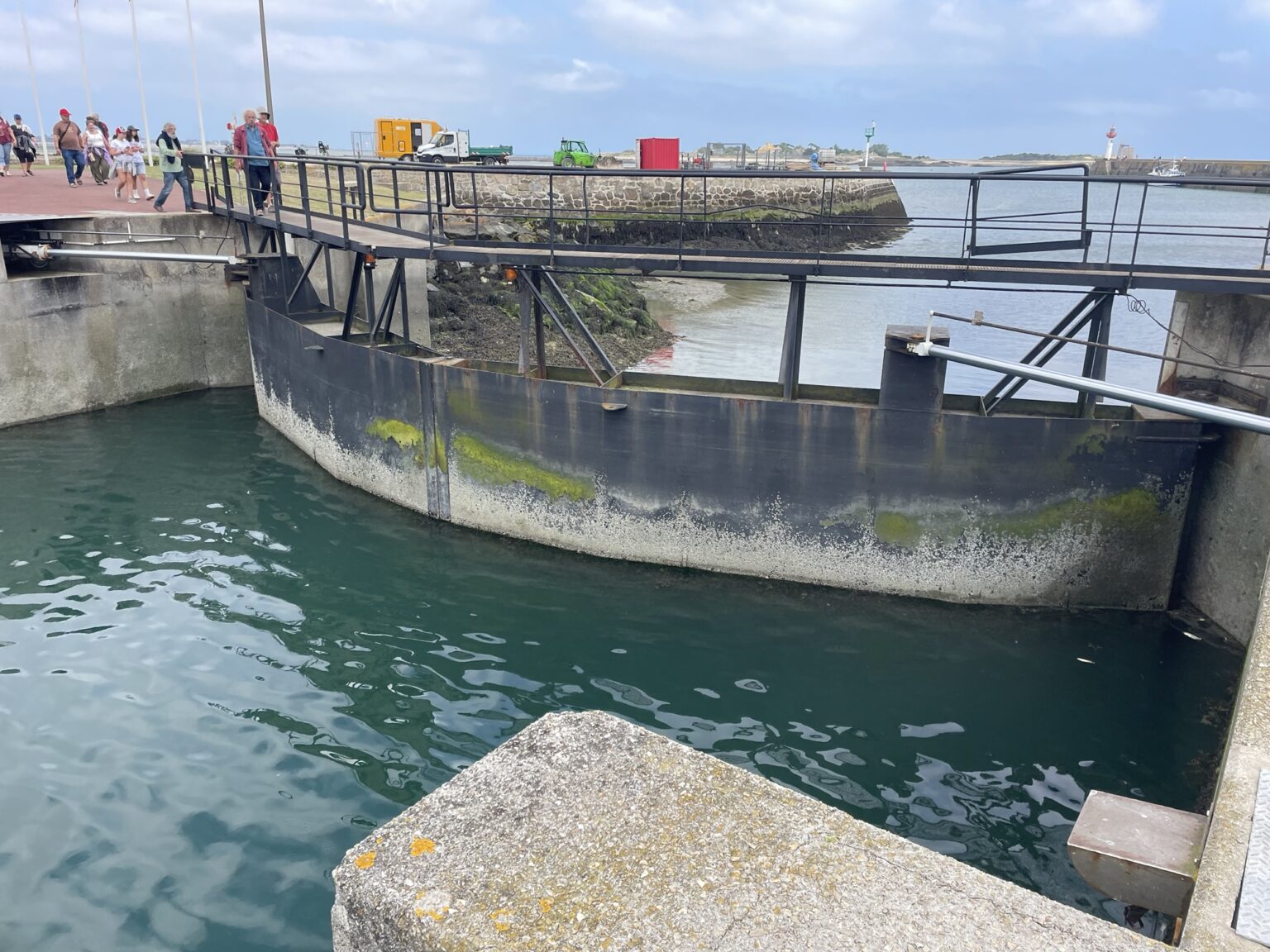
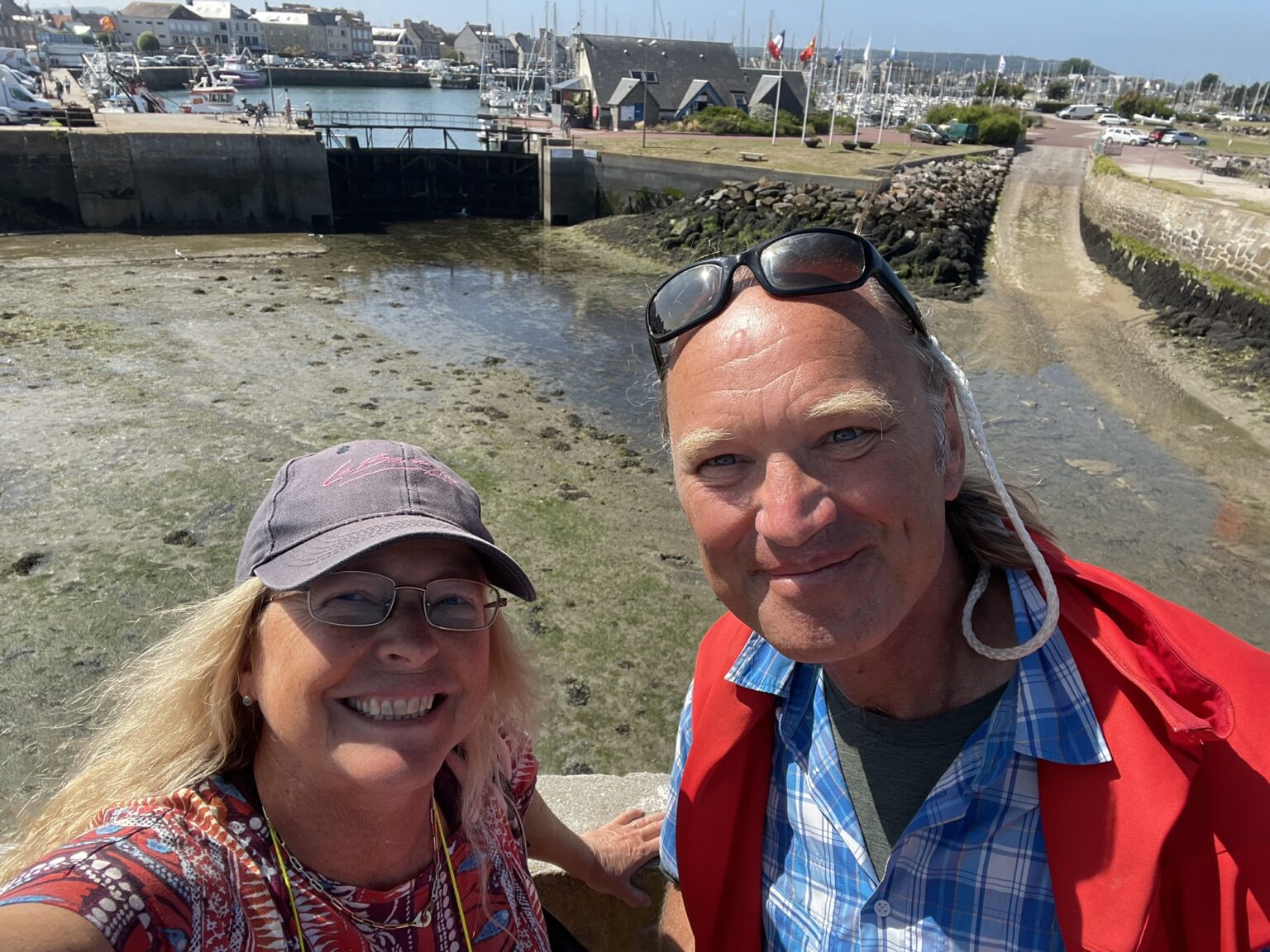
St Vaast is good for up to 2.3m so that’s fine for us. Our depth says there’s only 1.8 but I think that’s because we sink into the French mud.
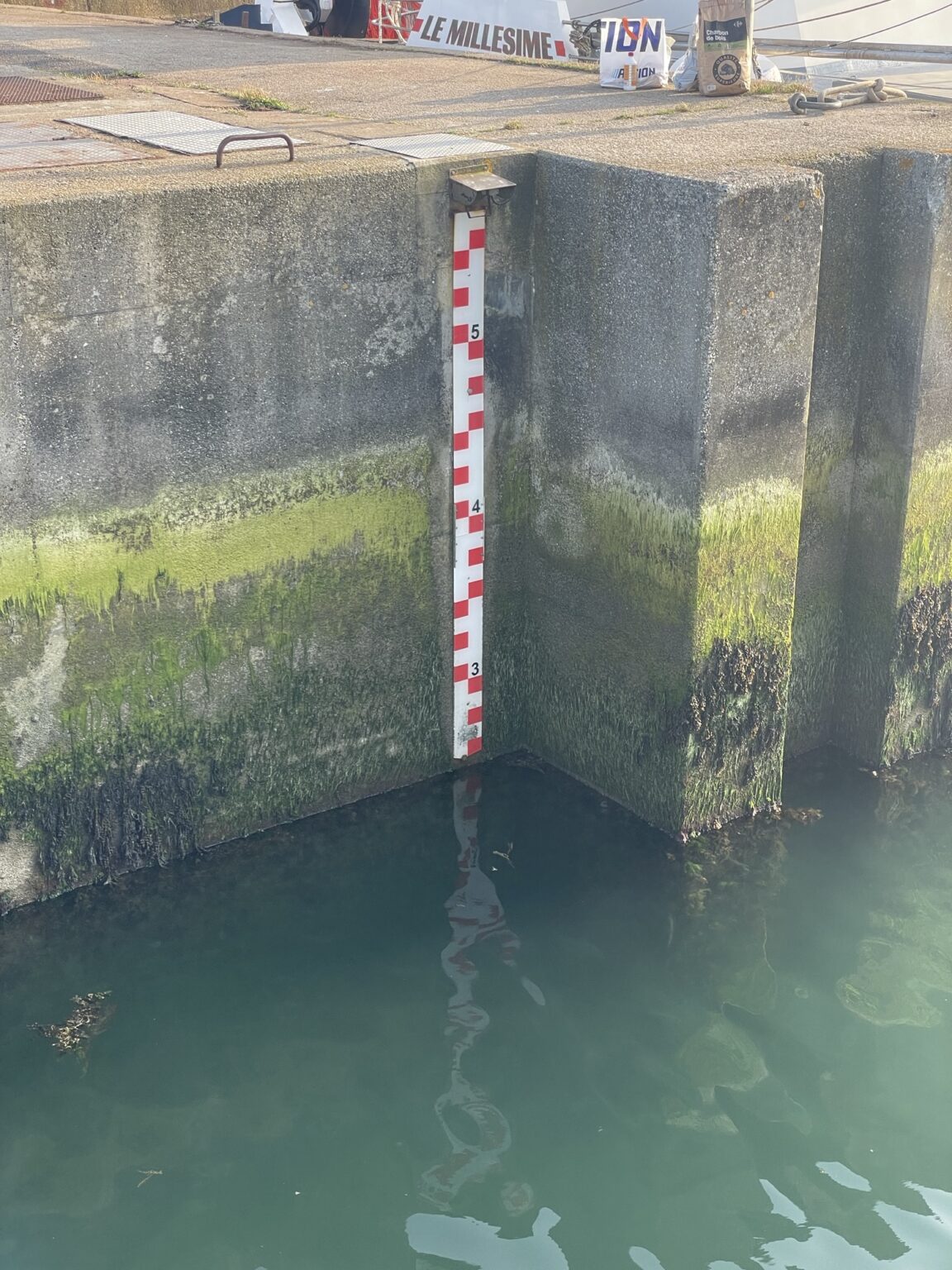
We were tied up on a nice side berth by 11am helped in by some friendly Dutch sailors.
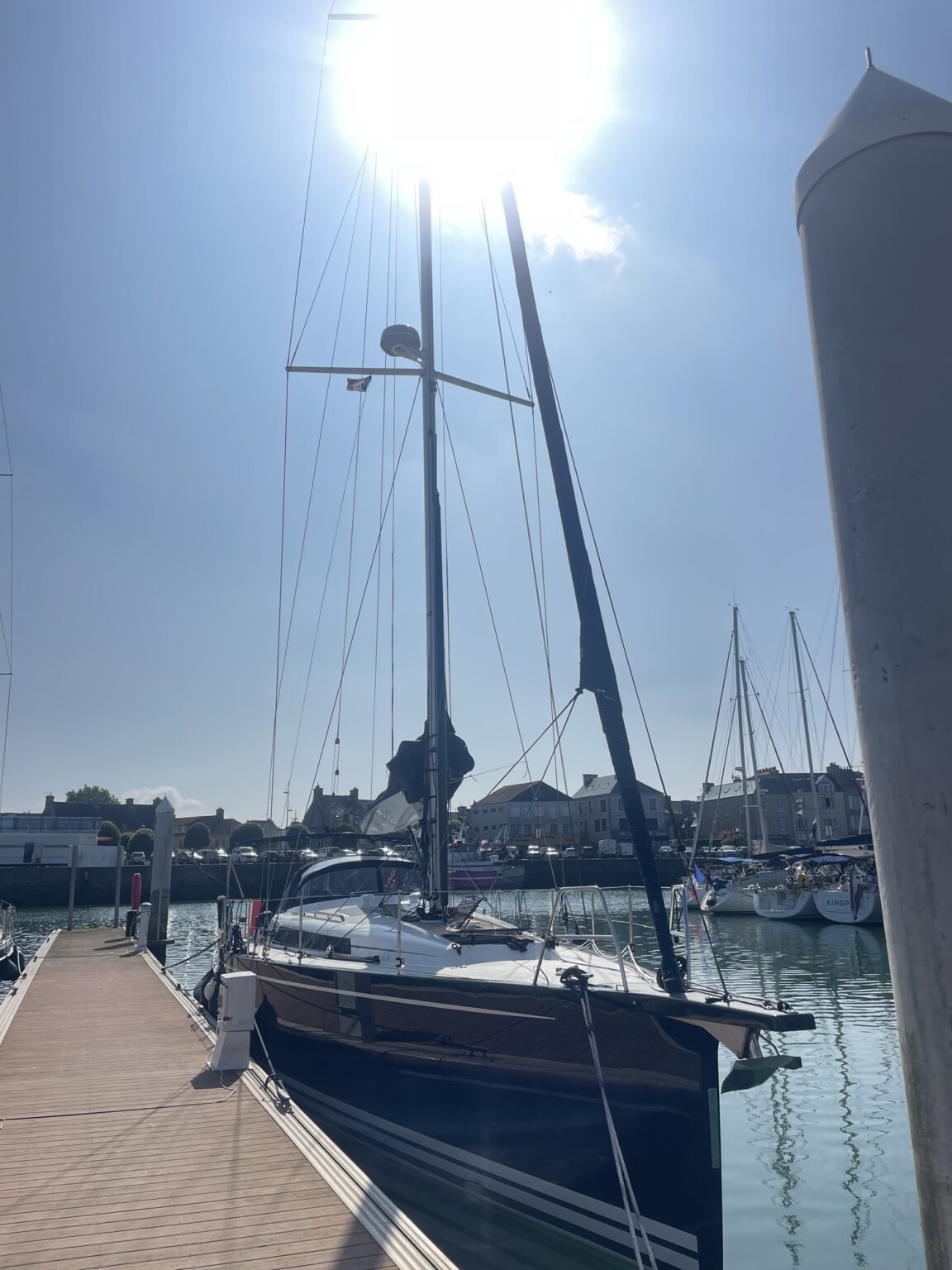
It’s very pretty here with some lovely classic boats – in different states of repair.
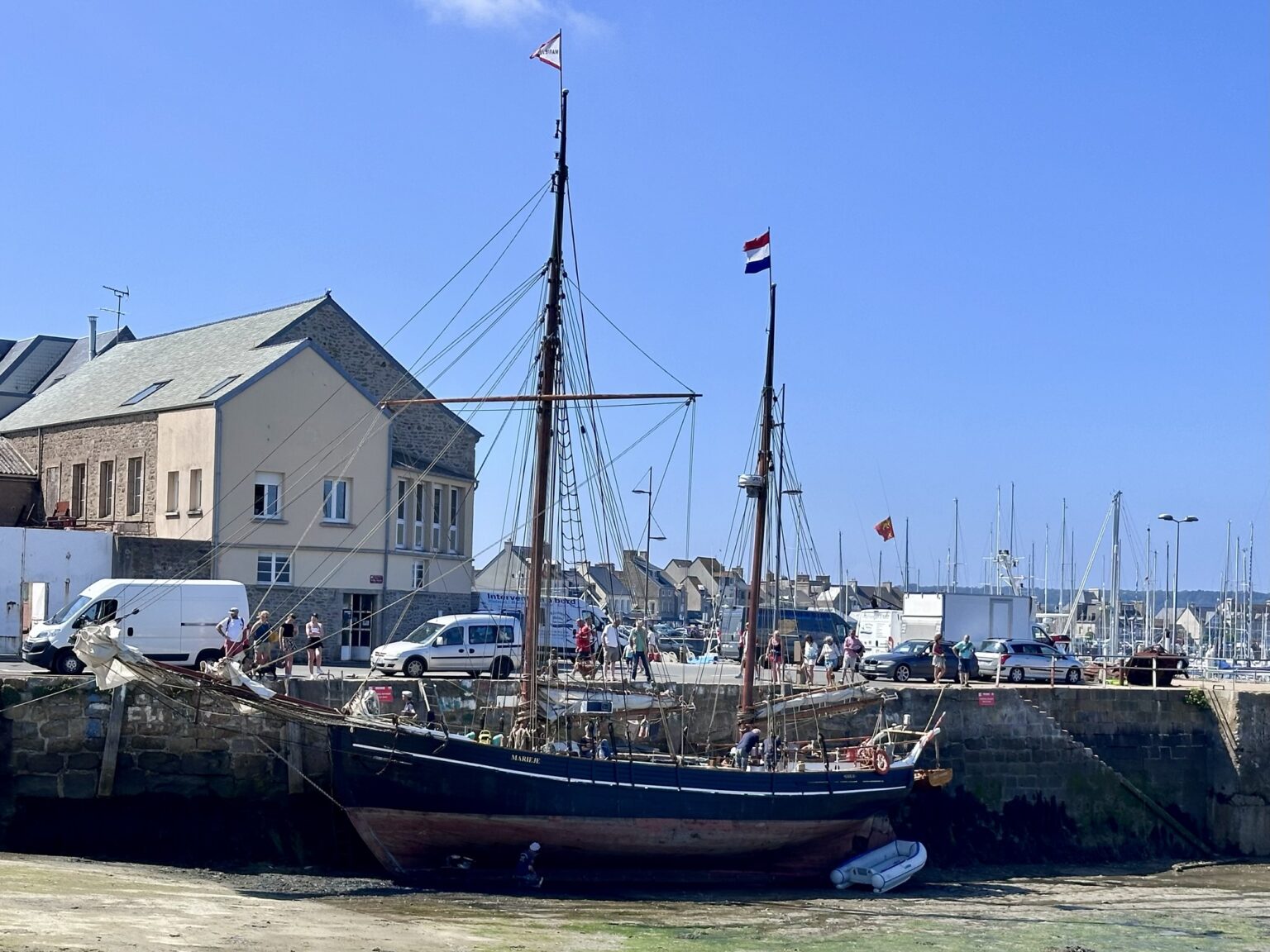
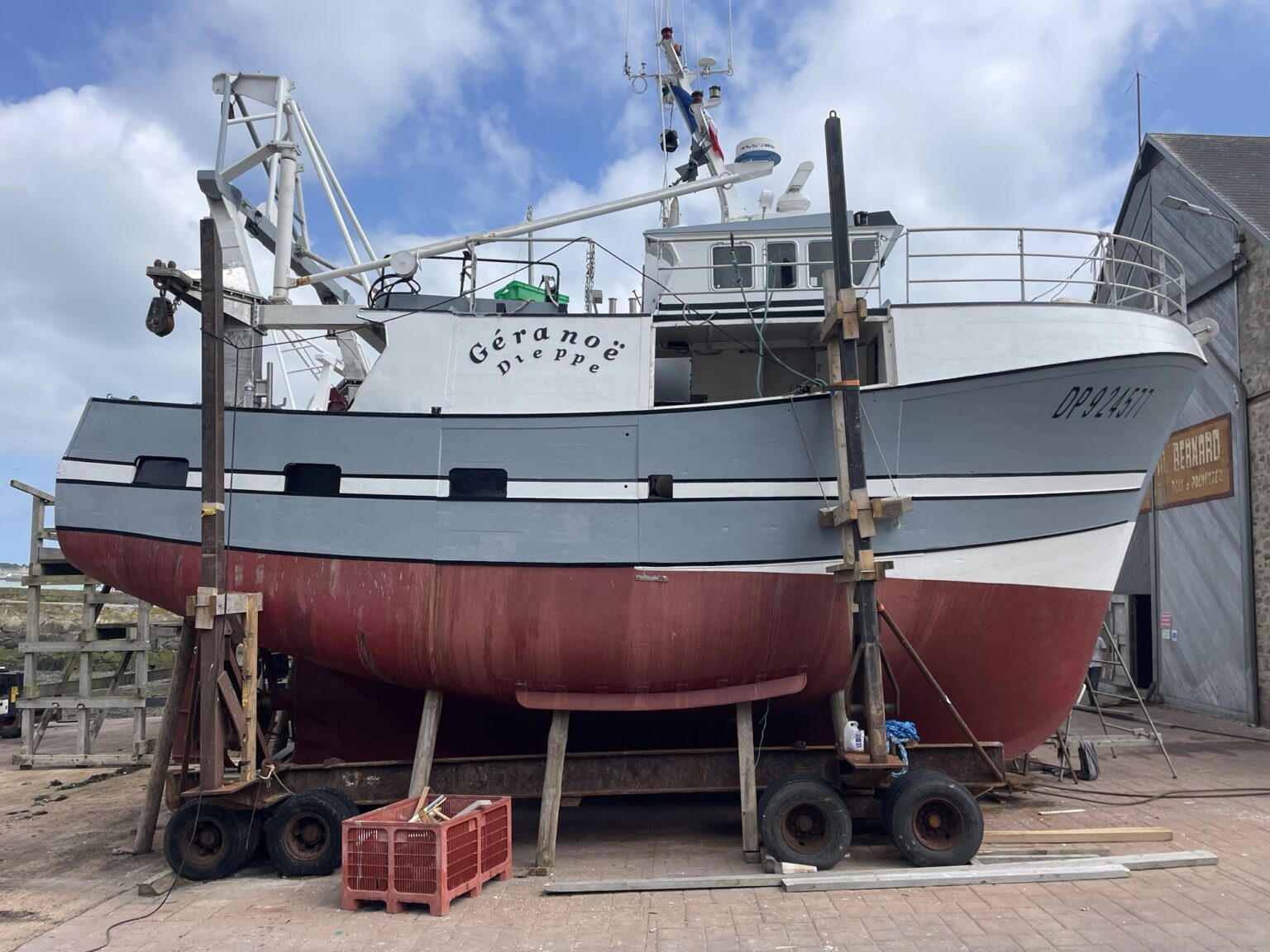
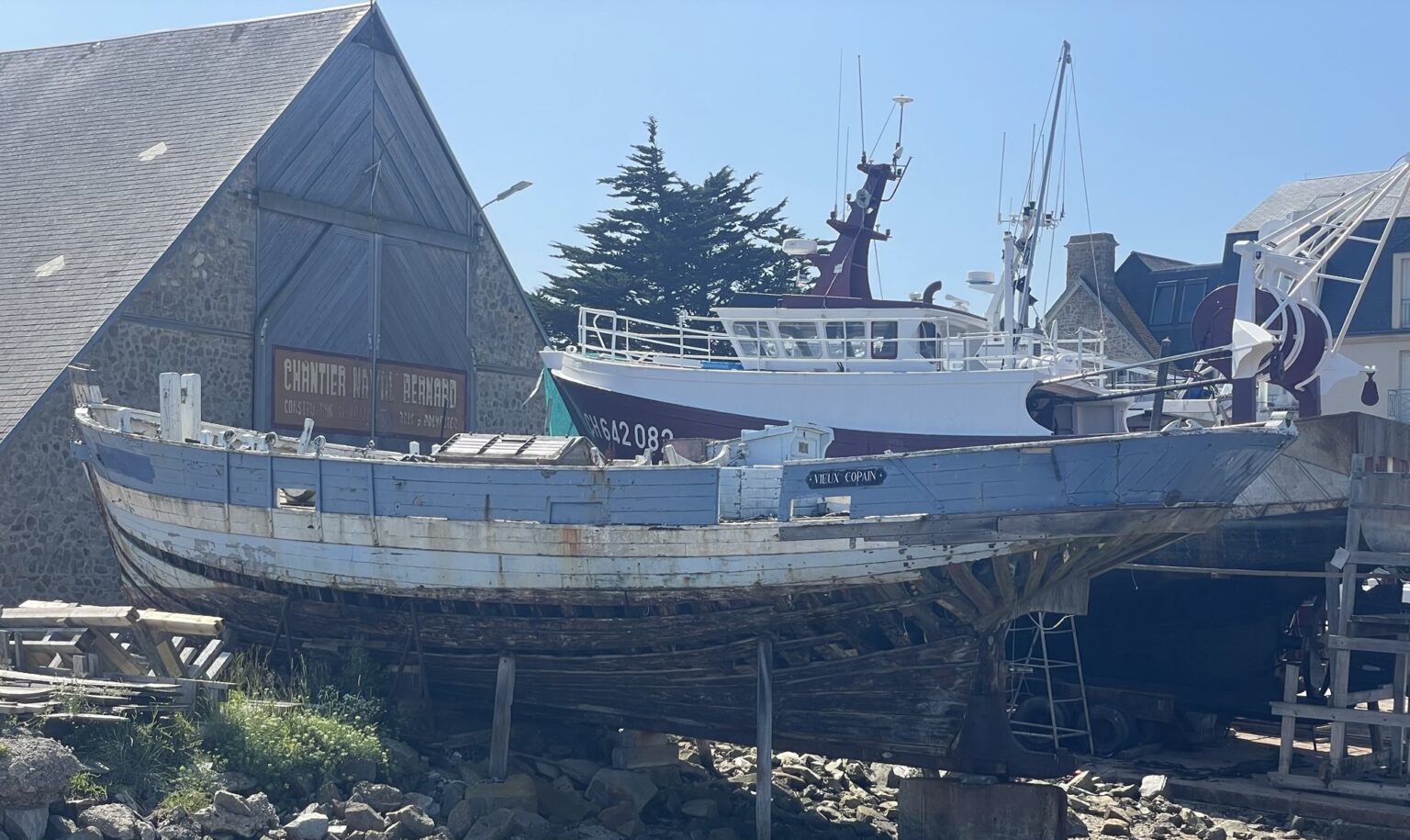
We went to the chapel for sailors – a pretty early Norman church. It was sad and sobering to see all the memorials to those lost at sea, mostly fishermen, often related and some very recent too.
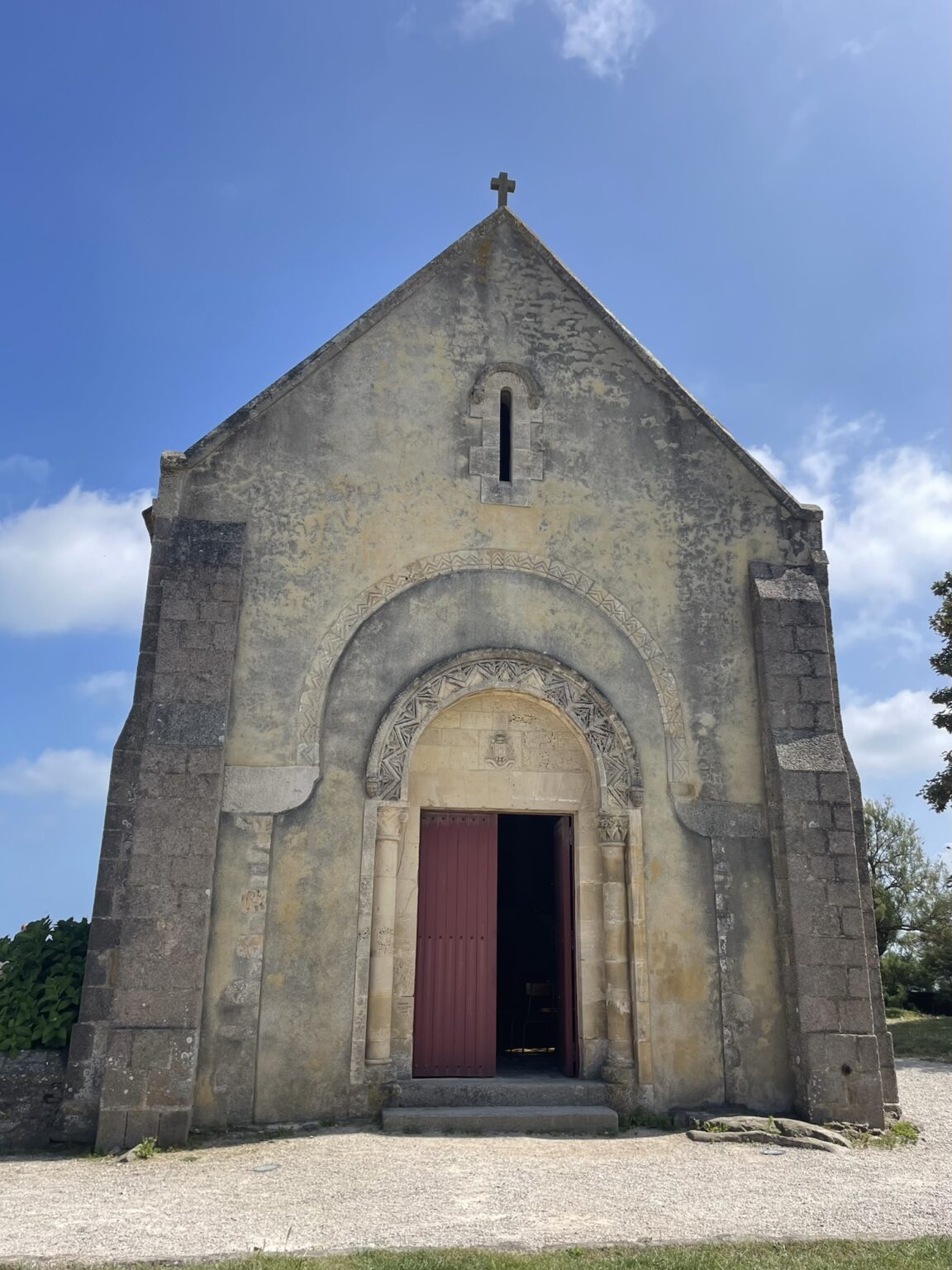
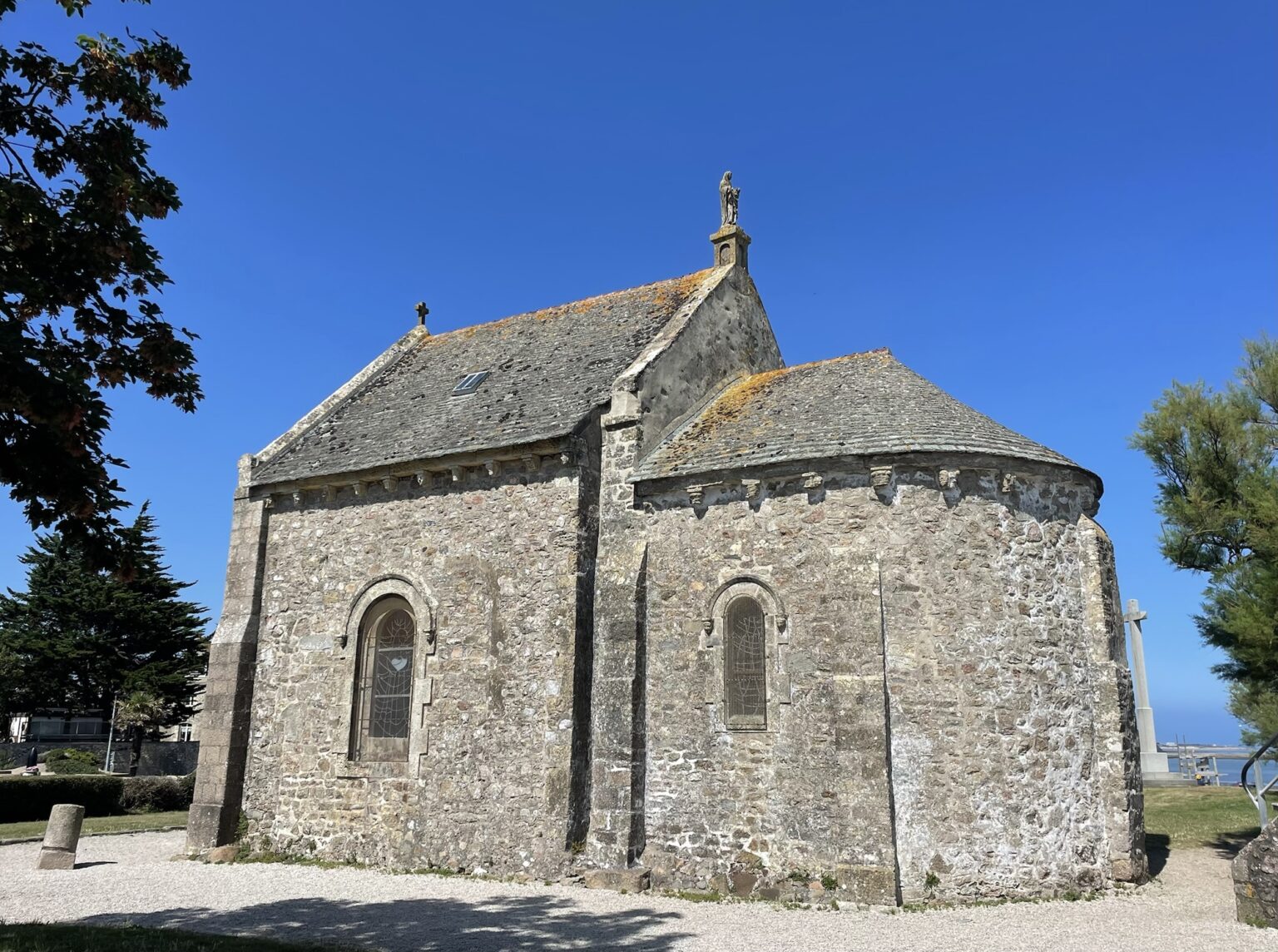
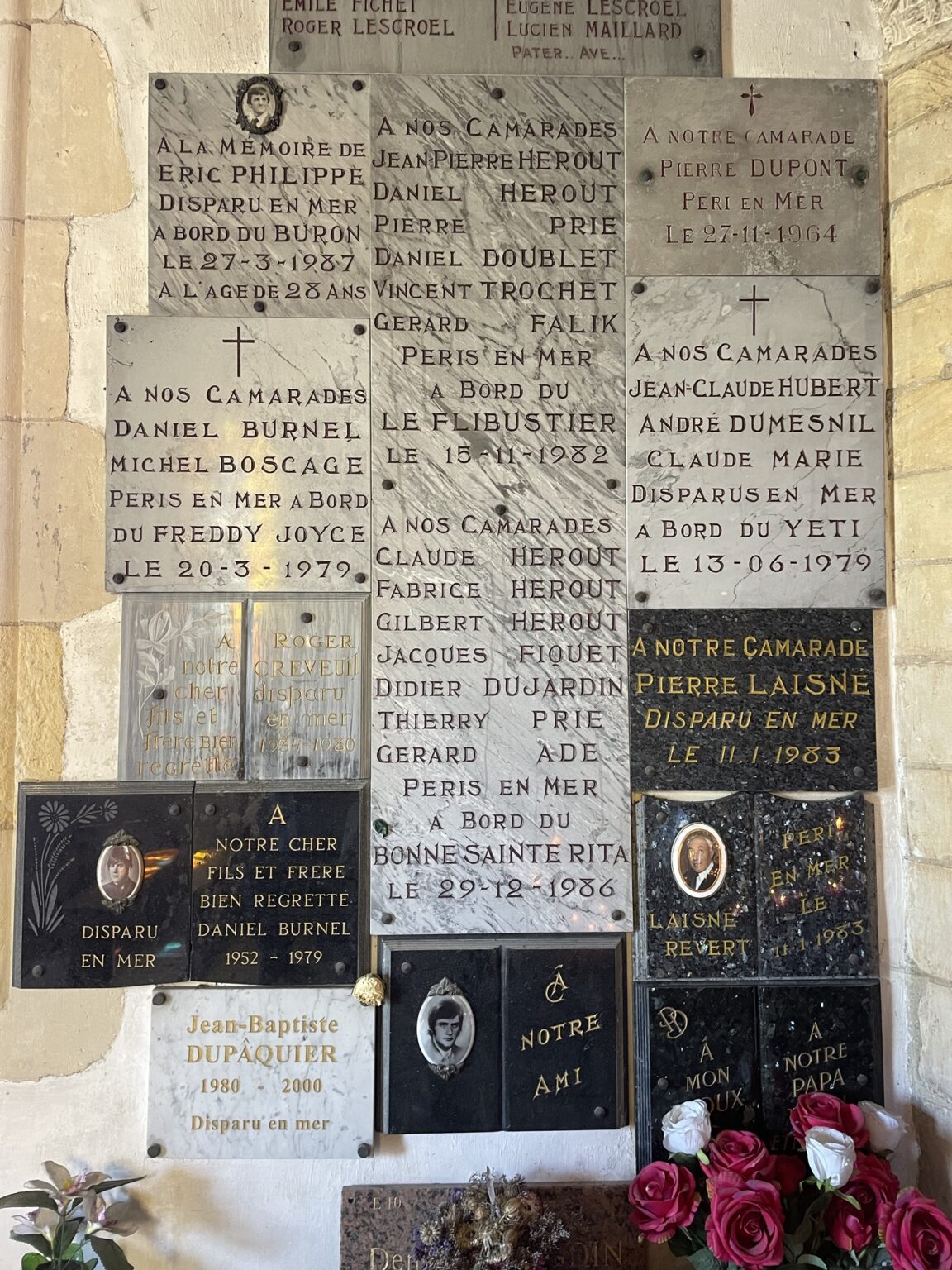
This is the land of oysters so I had some for lunch.
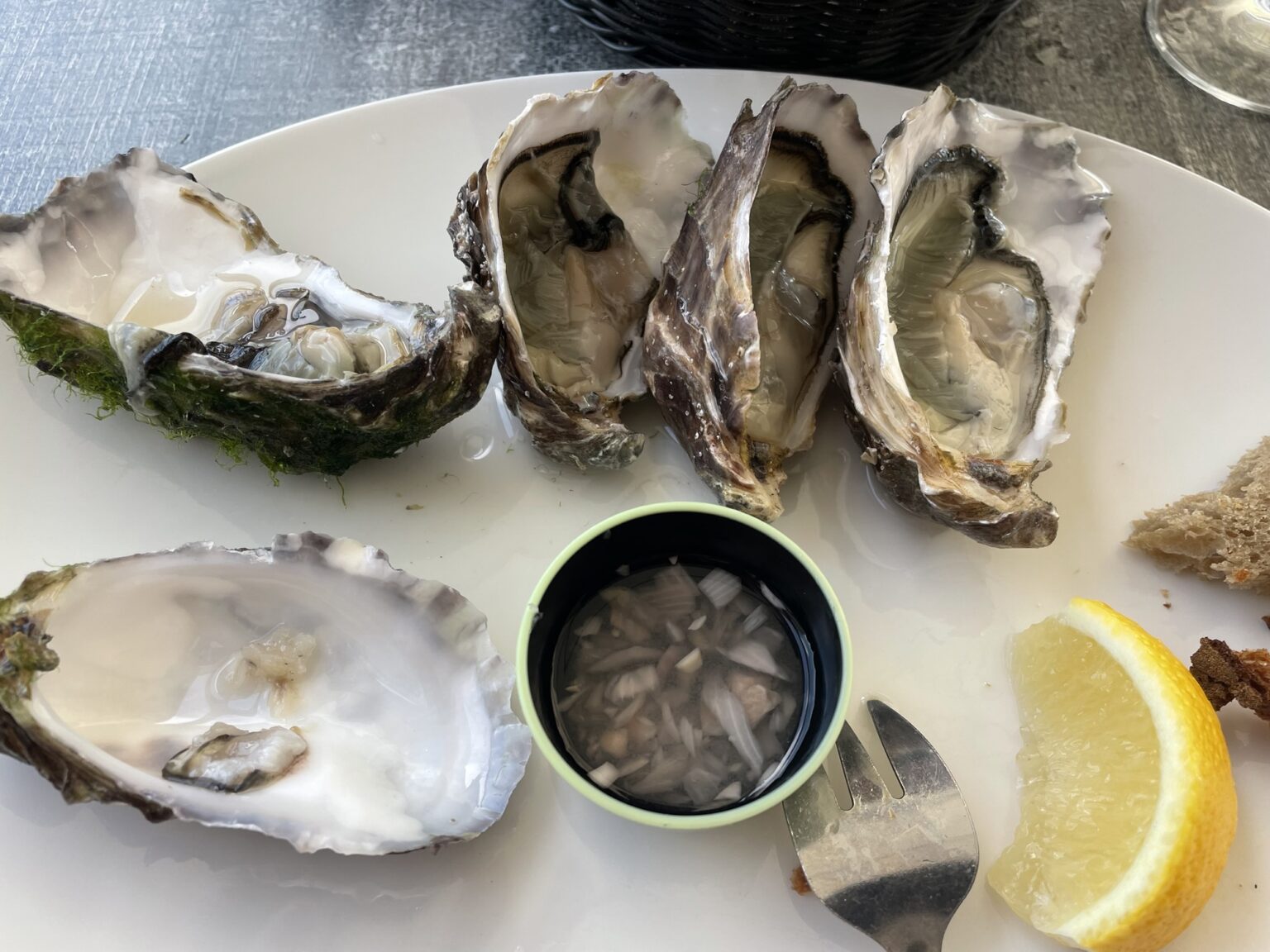
In the afternoon I watched them shaking and turning the oyster trays – looks like back breaking work!
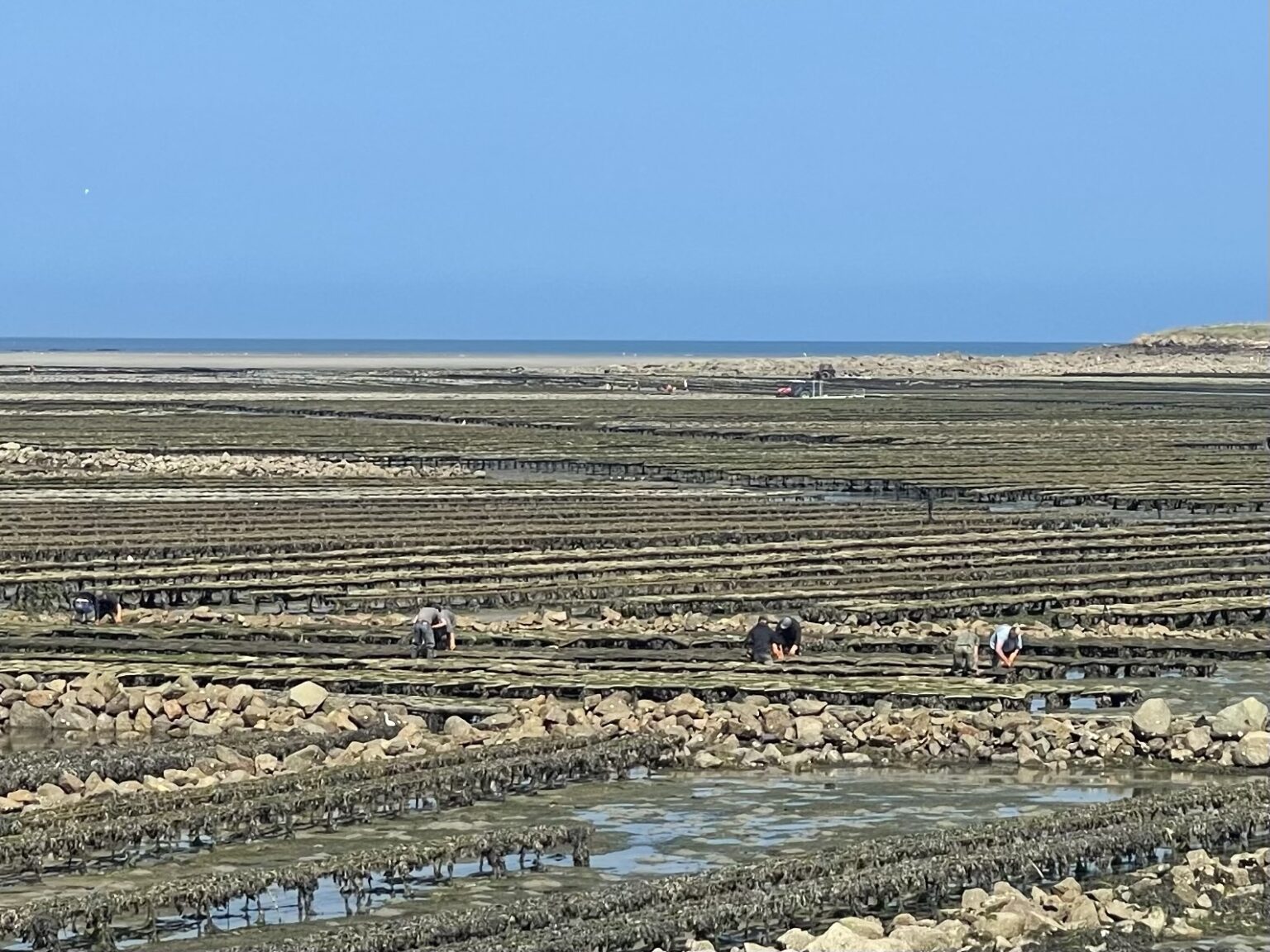
The oyster eggs are brought in from the south of France (tides are too strong here for them to breed) and placed on tubes to mature, then they are moved to trays for a year or more when tides can wash over them so they grow strong with all the phytoplankton here – they are turned and sorted frequently.
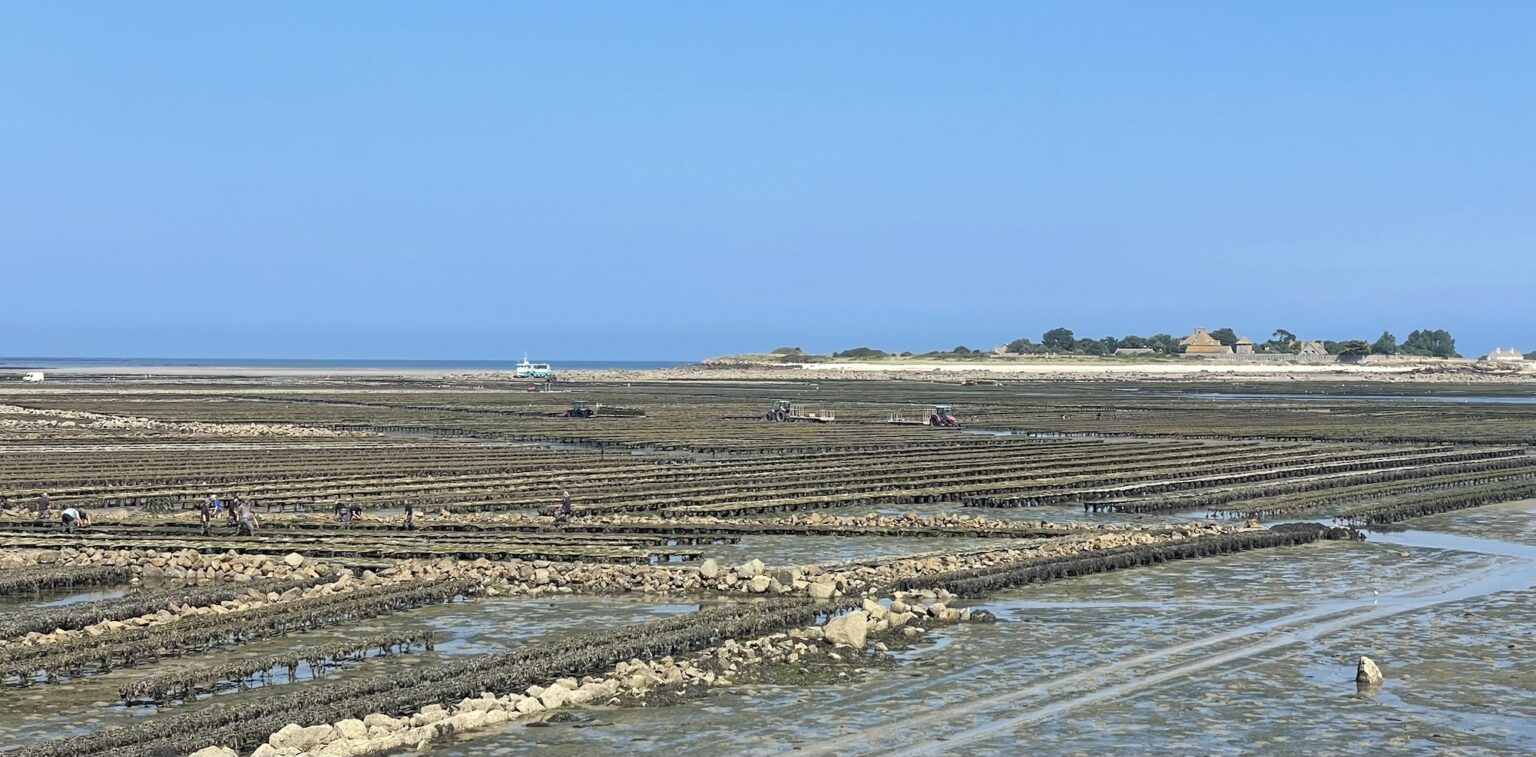
Once big enough they are put in shallower water so they have to open and close twice a day. This strengthens the muscle so they can stay closed for shipment to market. Next time you eat one, think of these men who have been doing this work for centuries to make your perfect oyster!
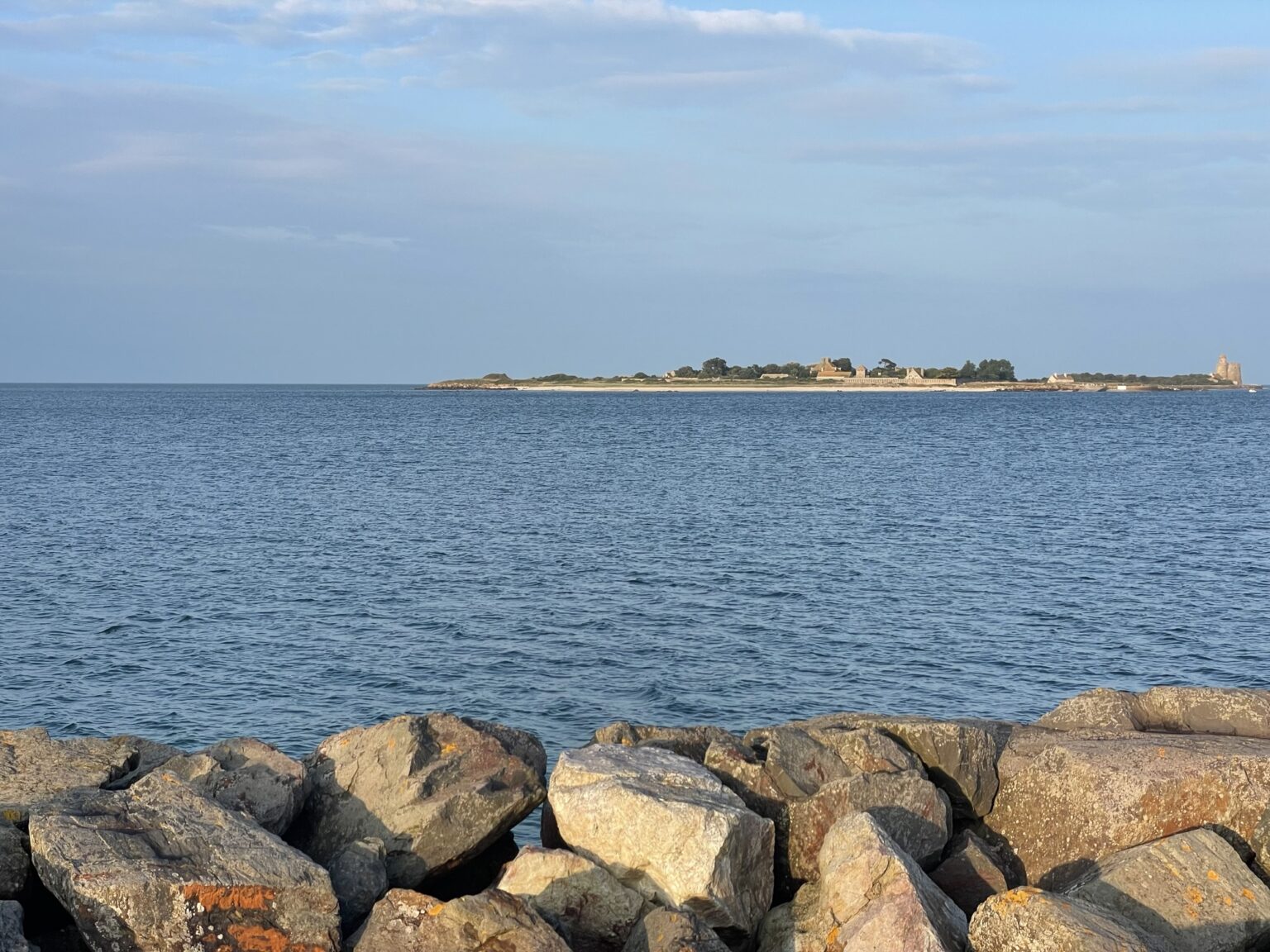
David made a new rope to attach the swivel to Lily the Pink as the old one had got snarled when we last used her. This entails getting ropes everywhere.
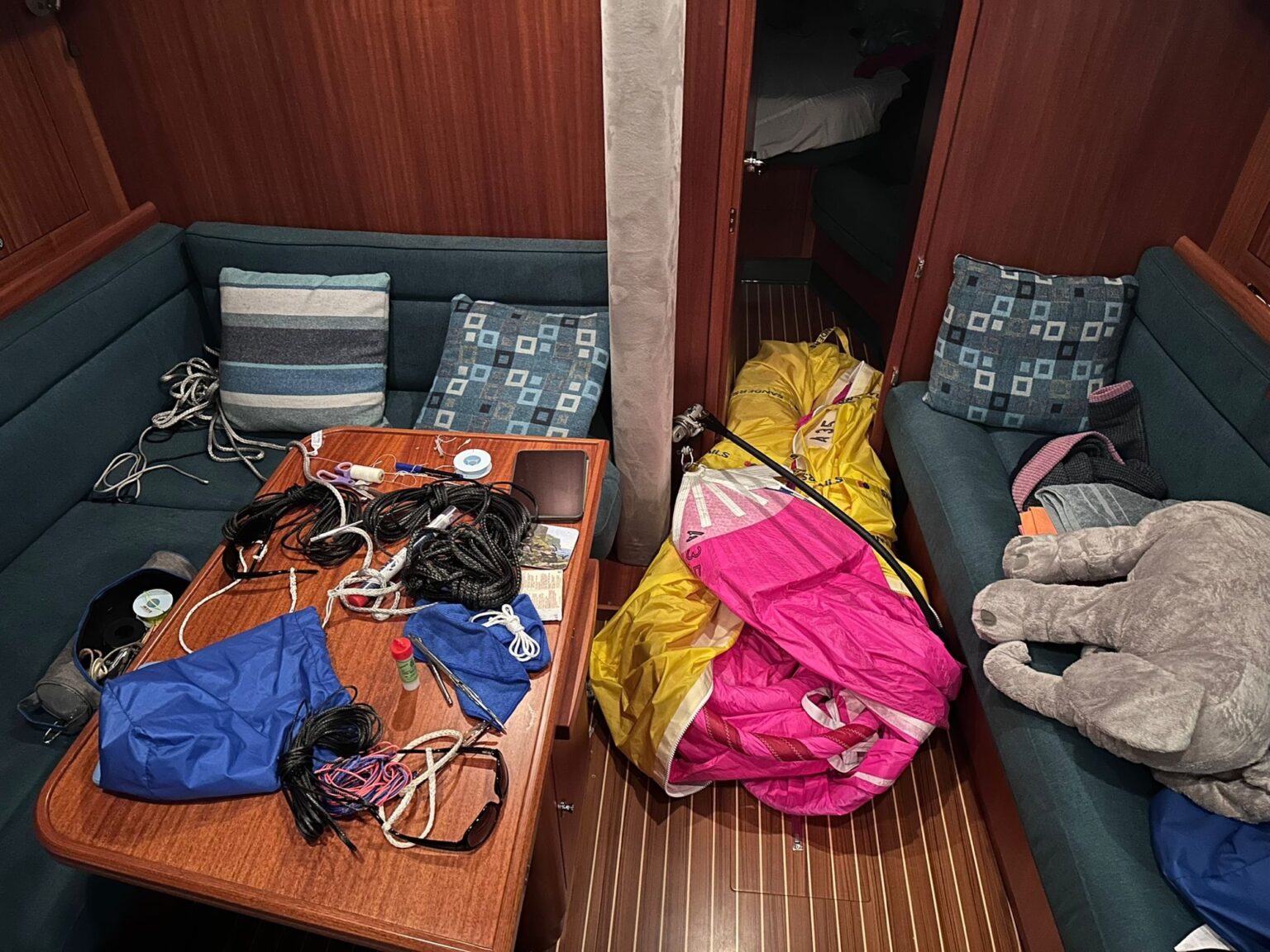
There’s a famous shop in town called Maison Gosselin
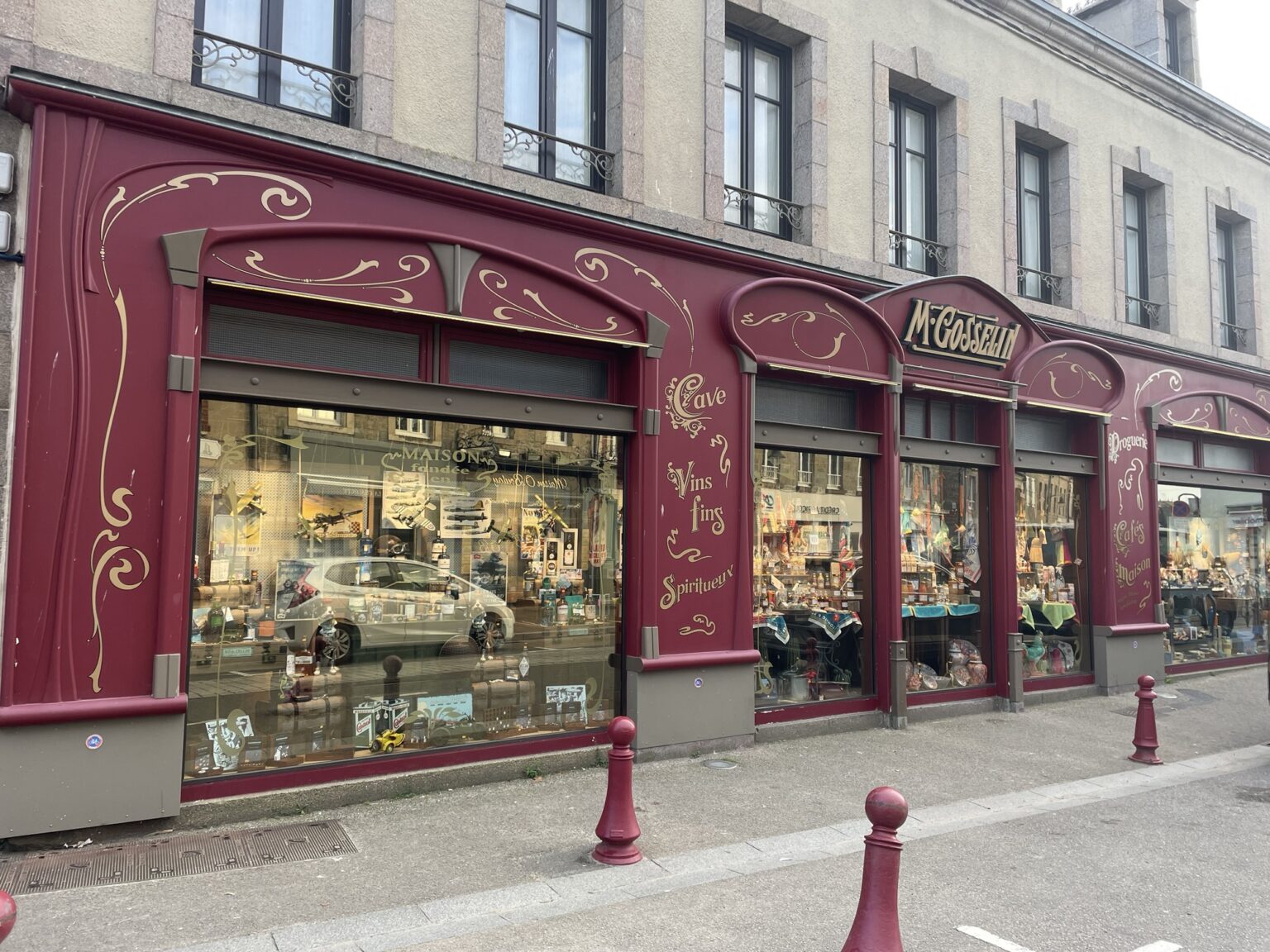
and it’s been going since 1889.
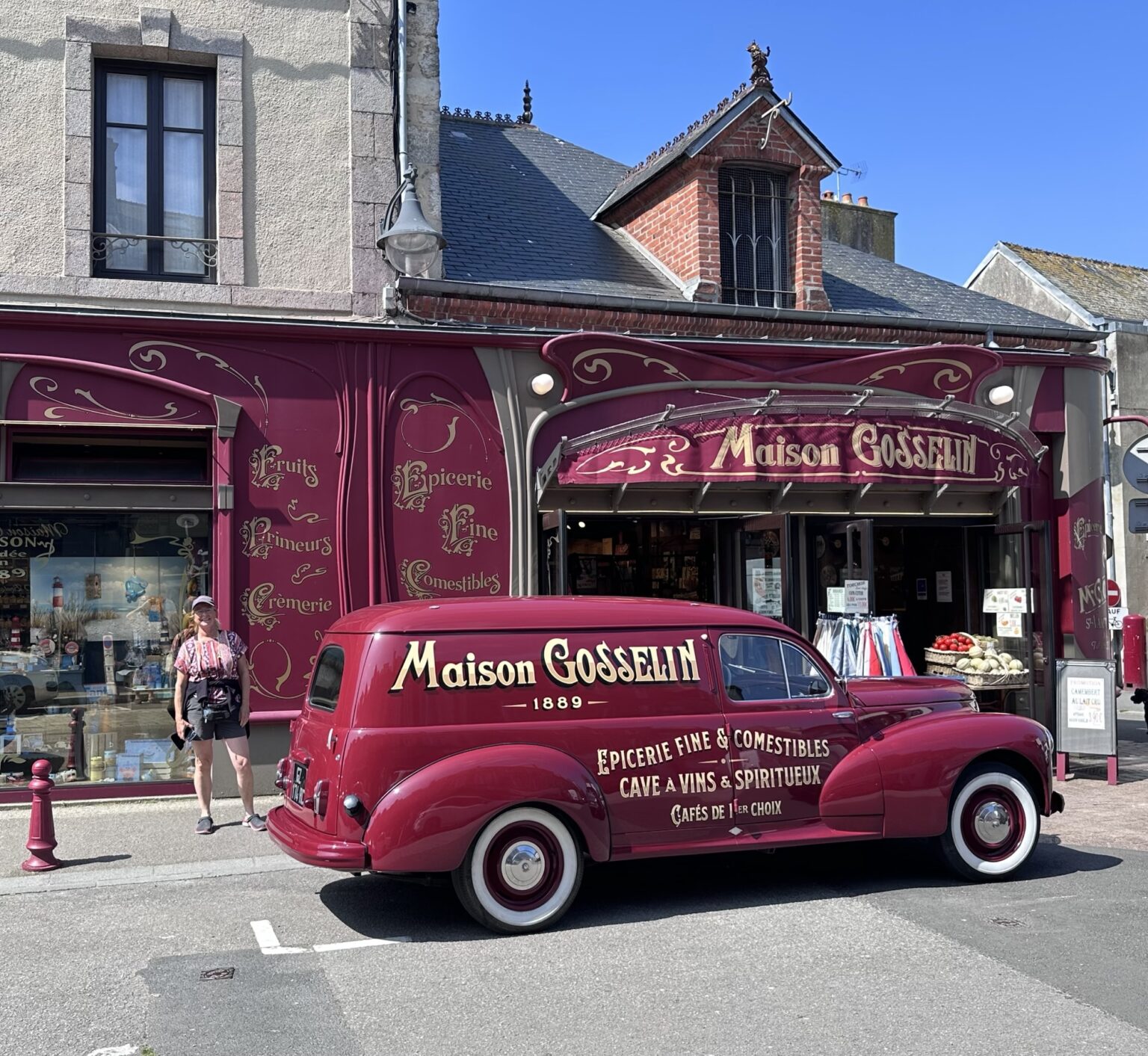
Well we weren’t here then, but we probably were in 1989 when we came racing with the Contessa fleet and first bought calvados.
And there’s an enormous Church, very out of proportion to the small town.
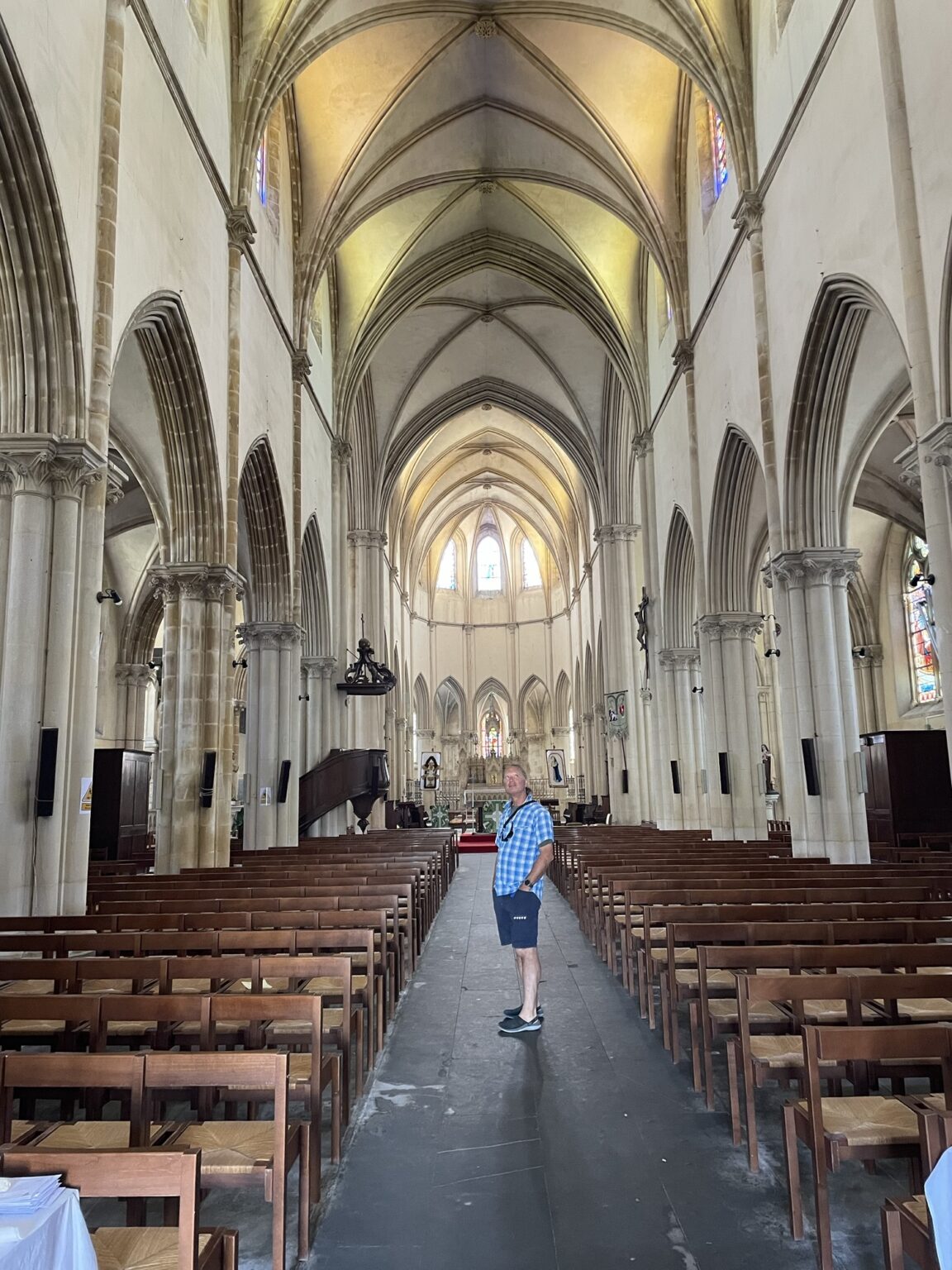
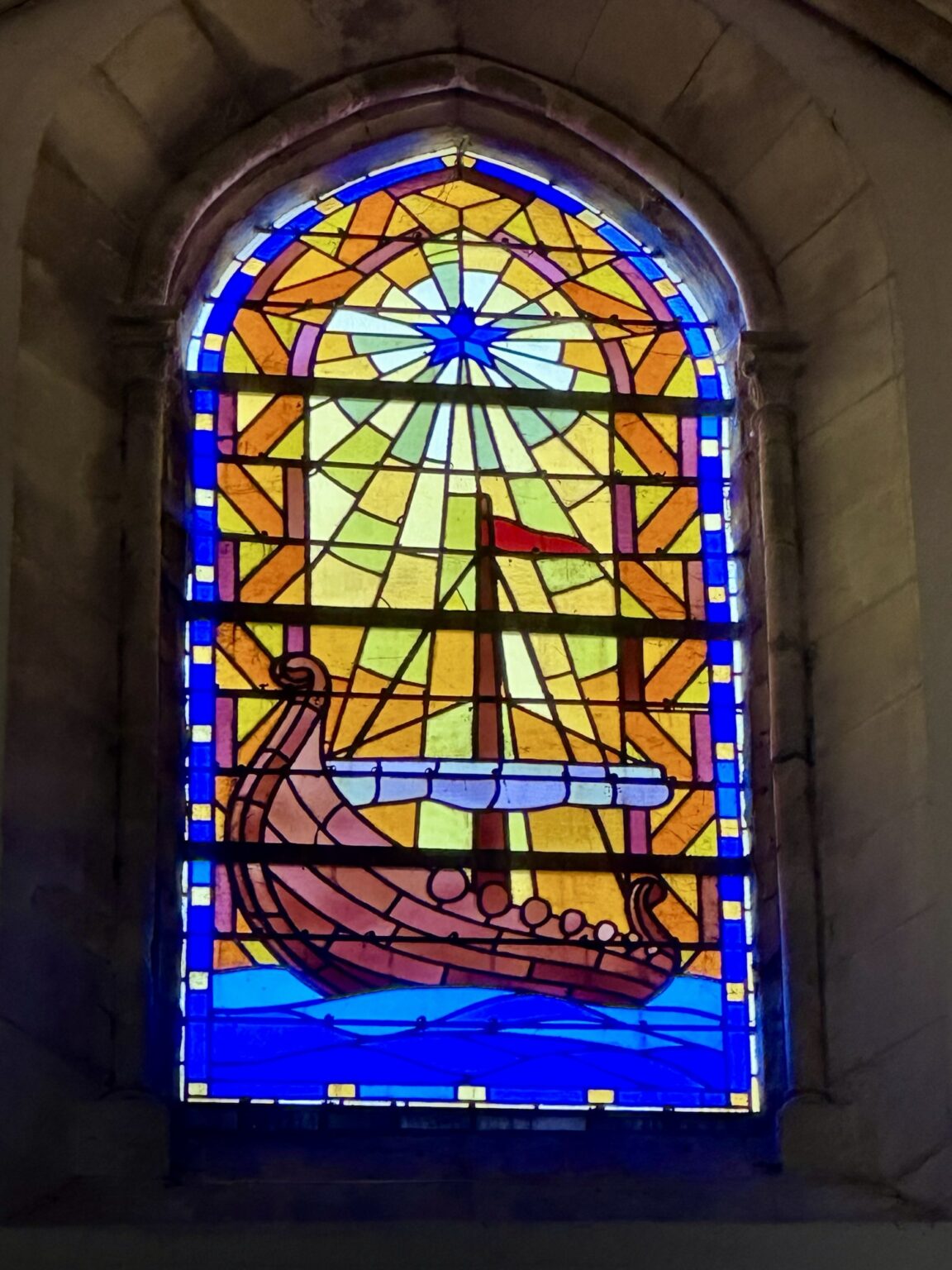
We love it here and will definitely be back – and much sooner than last time!
